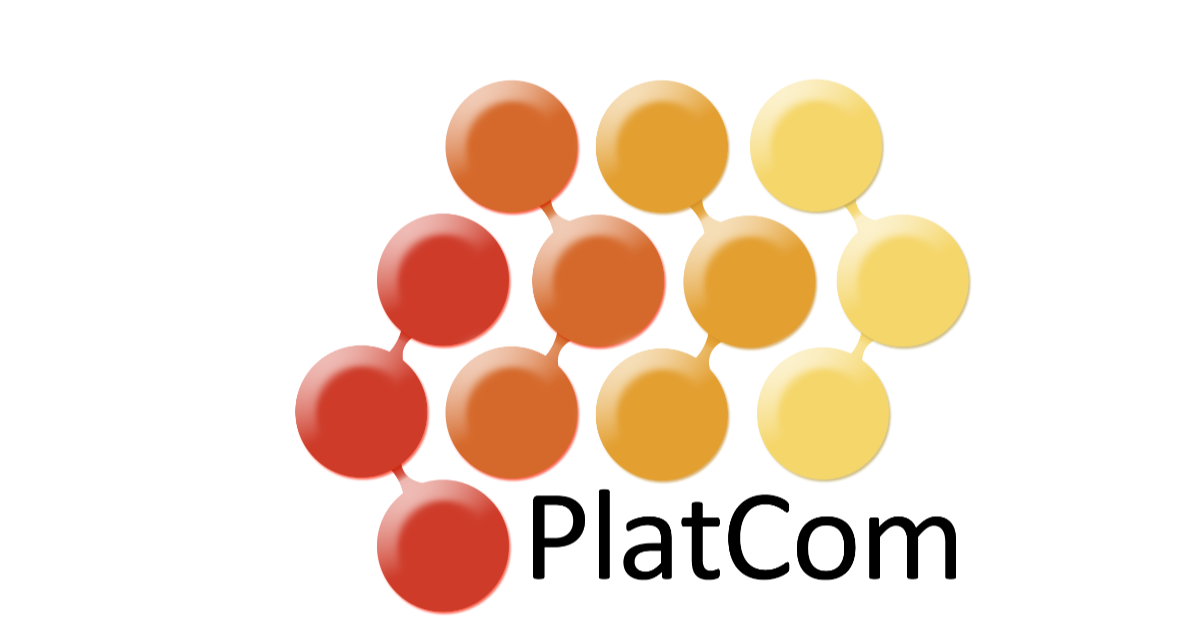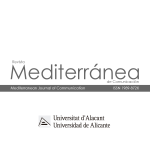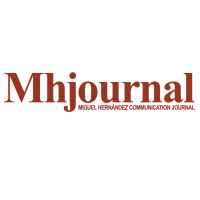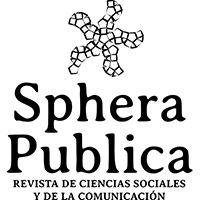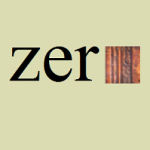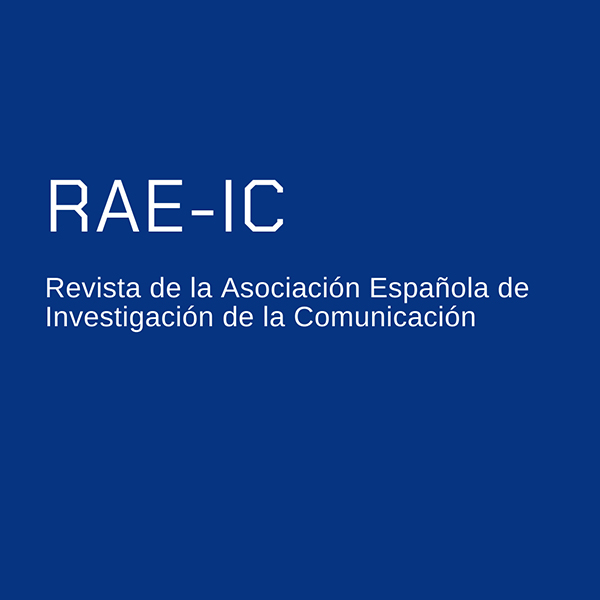Communication Papers
[Artículo] Digital Platforms and Media Use: An Exploratory Research on Trust, Gender Stereotypes and Bias in Turkey
Autor/a: Ceren Saran.
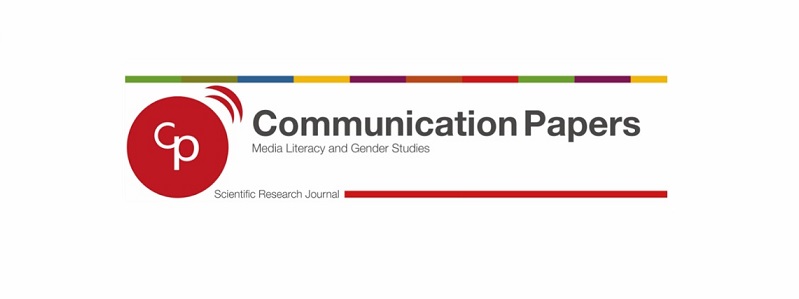
Media use and news consumption occur throughout digital platforms as a rising trend worldwide. These digital infrastructures serve as channels through which users access content and as gatekeepers that curate the content figured by algorithmic selection. Thus, this research is designed to step inside the digital media use and aims to understand what kind of stereotypes and biases users face in digital platforms. To that end, a group of international university students from Turkey were interviewed about their experiences from several digital platforms. Accordingly, the participants were asked about the preferred source of the news, whether they trust the content they encounter on platforms, the stereotypes they face in their social media use, the most disturbing content in terms of bias and discrimination, if they feel free on their social media accounts, the awareness about the concepts “stereotypes”, “representation”, “algorithmic selection”, “algorithmic bias”. The research has shown that gender is the most common category of stereotype, followed by political, religious, nationality, and social class. In parallel with the concept of intersectionality, it has been observed that other forms of social discrimination are also encountered along with gender on digital platforms.
Recuperado de: https://communicationpapers.revistes.udg.edu/article/view/22968
[Artículo] Theoretical approaches to Media and Information Literacy in Foreign Aid Projects (Model for Central Asian countries)
Autor: Azamjon Oltmishevich Dadakhonov.

This article is devoted to the analysis of different theoretical approaches to the field of MIL. It provides theoretical insights and definitions put forward by various experts in the field of ML and MIL. The author analyses the role of these approaches in develop the MIL level of the population, as well as the to increase the effectiveness of grants and projects of foreign donor organizations in Central Asian countries in the field of MIL. Using the main sources concepts, theories and approaches in different books about ML and MIL, manuals of international organizations, such as UNESCO, DW Akademie etc., the materials of the journal publications and archives, the author tries to give his own approaches to develop MIL in Central Asian countries. The article analyzes the sociological surveys that substantiate the results of the projects implemented in the field of MIL by various donor organizations in recent years. It was emphasized that in Central Asian countries, it is necessary to pay attention to regional, political and cultural peculiarities in increasing the level of MIL of the population.
Recuperado de: https://communicationpapers.revistes.udg.edu/article/view/22855
[Article] The reflection of the struggle against male violence on digital platform TV series: Hükümsüz and Mezarlık
Autora: Nur Tuğçe Biga.

On digital platforms, patriarchal ideology-challenging works are more widely available. The television series Hükümsüz, which debuted on the Exxen platform in 2021, and Mezarlık, which debuted on Netflix in 2022, have established themselves as pioneering projects that raise awareness of the rise in femicides in Turkey in recent years. The Mezarlık dramas, which also reveal the role of the police and the state in the murder of women, and the Hükümsüz series, which emphasizes that femicides are caused by gender inequality and calls into question the patriarchal order, are both examined from a feminist standpoint in this study as works that challenge male dominance. The representations in the dramas are coded in terms of gender roles, perpetrator responsibility and the victimisation of women in the representation of male violence, the politics of femicide and the responsibility of the state, and practices of combating male violence. Using content analysis, one of the qualitative research techniques, it was possible to determine that the series were composed in a way that was intended to undermine the patriarchy, which is a continuation of the prevailing ideology.
Recuperado de: https://communicationpapers.revistes.udg.edu/article/view/22943
[Artículo] La discriminación en los videojuegos: el caso Fortnite
Autores: Cristina Olivas Ripoll, Kenneth Alonso Muñoz.

Los videojuegos son una de las principales fuentes de entretenimiento; en los últimos años han experimentado un crecimiento exponencial en cuanto a número de jugadores y modelos de negocio. Su auge ha impulsado distintos modelos de negocio, tales como el free to play, que permite jugar de forma totalmente gratuita. Uno de los ejemplos más conocidos es Fortnite, un videojuego que atrae a adultos y niños, pero que se dirige a mayores de 12 años. Su modelo de negocio se basa en la compra de mejoras estéticas mediante el uso de su propia moneda virtual. El acceso a este contenido de pago se ha convertido en un símbolo de estatus y en un motivo de burla y acoso hacia los usuarios que, únicamente juegan con los ítems básicos que proporciona el videojuego de forma gratuita. En el caso de los menores, que representan más de la mitad de sus jugadores, se ha convertido en una herramienta para medir la popularidad y ha ahondado en las diferencias entre éstos y desencadenando casos de bullying en el ámbito escolar.
Recuperado de: https://communicationpapers.revistes.udg.edu/article/view/22906
[Artículo] Strategies of interviewing in cultural press
Autora: Carmen Neamtu.

The paper treats the interview as a main genre of the written press. The interview can be used by the researchers as a tool of direct documentation on the writer, painter, actor or director interviewed. The study focuses on several interviewing strategies, providing examples for a better understanding of the interview. I tried to highlight some important steps in interviewing, based on my 25 years of experience in Romanian mass-media: fixing the interview with the person we want to talk to, establishing the rules of the interview, meeting (s) with the person concerned in order to obtain the interview, preparation of the interview: topics to be discussed, setting the questions for the interviewee, preparing the recording equipment or clarifying the way of answering (in writing, by e-mail, telephone, etc.).
Recuperado de: https://communicationpapers.revistes.udg.edu/article/view/22843
[Artículo] Los efectos de las interacciones en comunidades virtuales en las redes sociales en la conformación y reproducción de la memoria cultural, la identidad del barrio y la cultura
Autor: Tugay Sarikaya.

Este estudio tiene como objetivo revelar el efecto de las comunidades virtuales en las redes sociales en la reproducción de la memoria cultural, la identidad del barrio y la cultura. Otro objetivo del estudio es investigar el potencial de las comunidades virtuales para dar forma a la memoria cultural, la continuidad y la estructura social y discutir el impacto de las personas que pueden producir y compartir activamente contenido en comunidades virtuales sobre la identidad y la cultura del vecindario. Para ello, se plantearon tres preguntas de investigación. RQ1: “¿Cómo ocurre la interacción en las redes sociales, a diferencia de las comunidades en el entorno físico?” RQ2: “¿Cómo se reconstruyen y moldean la memoria cultural, la cultura del barrio y la identidad en el contexto de comunicación e interacción que emerge en las comunidades virtuales de las redes sociales?” RQ3: “En las comunidades virtuales en las redes sociales, ¿cuál es el potencial de las subculturas para influir o contribuir a las comunidades a escala macro con la interacción resultante?” El abordaje teórico de la investigación consta de Mead (2019), representante del interaccionismo simbólico, y la relación de la autosociedad de Goffman (1978) con la presentación del Self. Además, se mencionaron la memoria cultural, la identidad y cultura barrial, y el concepto de comunidad virtual, y en esa dirección se encaminó la codificación realizada para la investigación. Como muestra para el estudio, se obtuvieron comentarios en la comunidad virtual Tatavla’dan Kurtuluş’a en Facebook entre el 30 de mayo y el 30 de diciembre de 2022 (n: 1134), y estos comentarios fueron analizados por el método de análisis del discurso de Van Dijk. De acuerdo con los hallazgos, las comunidades formadas por el encuentro de los yos en el contexto micro aseguran la continuidad de la identidad y la cultura del barrio que se ha erosionado en el entorno virtual. Sin embargo, el impacto de estas comunidades en las relaciones e instituciones cara a cara sigue siendo limitado.
Recuperado de: https://communicationpapers.revistes.udg.edu/article/view/22887
[Artículo] El 8M y el purplewashing ante los enfoques de la responsabilidad social de los bancos en España y México y sus campañas de Facebook como parte del diseño organizacional y el contexto cultural digital
Autores: Arnulfo López Ramos, Raúl Santos Morales, Herlinda Ortiz Rodríguez.

Esta investigación aborda el tema del purplewashing, el uso de estrategias para promover un compromiso aparente o simulado hacia la igualdad de género como las campañas del Día Internacional de la Mujer (8M) publicadas en Facebook por organizaciones bancarias de España y México durante 2022 y 2023. El objetivo general es descubrir si estas campañas incurrieron en prácticas de purplewashing, analizando el contexto cultural de los mensajes y valorando los enfoques de responsabilidad social utilizados. La metodología mixta emplea un análisis de contenido deductivo cuantitativo y cualitativo, junto con un análisis discursivo e interpretativo para codificar y comparar los mensajes. Los resultados revelan que una organización bancaria de España mostró la responsabilidad social más alta al implementar 8 acciones vinculadas a la equidad de género, adoptando un enfoque proactivo, mientras que una organización bancaria de México tuvo la responsabilidad social más baja al implementar solo 2 acciones, mostrando un enfoque defensivo. Los hallazgos sugieren que las prácticas de responsabilidad social en relación con la equidad de género varían significativamente entre las organizaciones bancarias analizadas y tienen implicaciones importantes para el diseño organizacional y la responsabilidad social corporativa. La investigación destaca la necesidad de continuar explorando y monitoreando las prácticas de purplewashing y responsabilidad social en las campañas del 8M en el sector bancario y otros sectores.
Recuperado de: https://communicationpapers.revistes.udg.edu/article/view/22902
[Artículo] Estereotipos de género y TIC en secundaria: un estudio mediante metodología mixta
Autores: Virginia Pajares Martín, Mireia Usart Rodríguez.

La comunidad científica revela sistemáticamente la infrarrepresentación de las mujeres en los grados de ciencia, tecnología, ingeniería y matemáticas; y los impactos negativos que ello conlleva en la sociedad. El objetivo del estudio es identificar los factores, atendiendo a las diferencias de género, que influyen en la elección de optativas por parte del alumnado del cuarto curso de secundaria matriculados en un colegio privado de la Comunidad de Madrid. Mediante un estudio de caso, se emplea un diseño mixto secuencial explicativo, usando dos encuestas en la fase cuantitativa (N = 84; N = 73) y la observación participante en la cualitativa (N = 22), siendo esta muestra de un curso menor a las anteriores. Los datos cuantitativos se analizan empleando la prueba de Chi-cuadrado con la correspondiente significación estadística. Para los datos cualitativos se recurre al análisis de contenido. Los resultados constatan diferencias de género significativas en las cuatro dimensiones exploradas: individual, familiar y de pares, institucional y sociocultural. Ellas denotan un autoconcepto negativo, escasa creencia de capacidades, mayor influencia familiar y consciencia de las desigualdades de género en diversos ámbitos, comparado con sus compañeros. Asimismo, se mide que los estereotipos influyen sustancialmente en el desarrollo de los adolescentes, impactando en sus decisiones académicas. En consecuencia, se proponen proyectos tecnoeducativos de larga duración, formación al profesorado con perspectiva de género y la inclusión de la educación emocional para reducir la brecha digital de género.
Recuperado de: https://communicationpapers.revistes.udg.edu/article/view/22900
[Artículo] Overview of Spanish Universities’ Sustainability and Sustainability Communication Performance
Autor: Esra Bayhantopçu.

Sustainability is not only essential for protecting the environment; it is also important for equality, human rights, the fight against hunger, education, health services and social development. Sustainability communication is just as important as these efforts. Through communication, it is possible to make these efforts known and raise awareness on the subject. Universities, which have the greatest role in the development of society, are responsible for raising informed and aware future generations and leading other institutions. This research aims to holistically assess current sustainability and related communication practices, particularly in terms of gender/equality, to reveal the general framework of sustainability structures in universities and to examine communication practices surrounding sustainability in Spanish universities, which perform well in this regard. A survey was conducted with 12 Spanish universities which are scored in THE and QS World University Rankings according to their Sustainable Development Goals (SDG) performances. According to the findings; in terms of gender equality and equity practices, Spanish universities perform well. However, it was revealed that communication efforts need to be improved. It can be argued that this inadequacy inhibits awareness on equality issues and sustainable development.
Recuperado de: https://communicationpapers.revistes.udg.edu/article/view/22905
